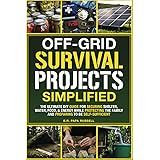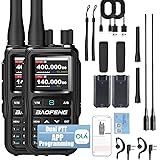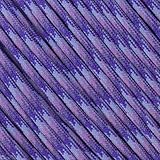Securing sustenance in a remote, wild environment is paramount for successful jungle survival, as demonstrated in the captivating video above. The ability to identify, catch, and prepare reliable survival food sources, such as fresh fish and succulent crab, significantly enhances your chances of enduring the challenges of the wilderness. This guide delves into essential strategies and techniques for transforming raw jungle resources into nourishing meals, covering everything from primitive fishing to cooking delectable seafood.
Mastering Primitive Fishing for Survival Food
Procuring fish in a jungle setting requires ingenuity and a deep understanding of aquatic ecosystems. Rivers, streams, and even temporary pools can harbor vital protein sources. Conventional fishing gear is often unavailable, thus demanding alternative methods that leverage natural materials. Establishing effective primitive fishing techniques is an invaluable skill for any individual facing a wilderness food preparation scenario.
Building Primitive Fishing Traps
One of the most efficient strategies for consistently catching fish without constant effort involves constructing primitive traps. Fish traps can be fashioned from locally sourced materials, such as sturdy branches, vines, and rocks. A common design is the funnel trap, which guides fish into an enclosure from which escape is difficult. These traps are particularly effective in shallow, moving water or narrow channels, capitalizing on the natural movement patterns of various freshwater fish species.
- Weir Traps: Constructed by creating a barrier across a stream or river, diverting fish into a collection area.
- Basket Traps: Woven from pliable vines or reeds, designed with a conical entry that allows fish in but prevents them from swimming out.
- Stone Weirs: Utilizing natural rocks to form small dams or channels that concentrate fish for easier capture.
Furthermore, setting these traps strategically overnight or during periods of low visibility can yield significant results. Regular inspection and maintenance of your traps are crucial to ensure their continued effectiveness and to harvest your catches promptly. Learning to adapt your trap designs to the specific environment and available resources will enhance your overall success in acquiring jungle survival sustenance.
Improvised Fishing Tools
Should trap building prove too time-consuming or unsuitable for the terrain, improvised fishing tools offer a more active approach. A rudimentary spear can be crafted from a straight stick sharpened at one end, hardened by fire if possible. This method requires patience and practice to master, particularly when targeting swift-moving red fish survival recipes or other aquatic creatures. Additionally, hooks can be carved from bone, wood, or even thorns, and then attached to lines made from strong plant fibers.
Hand-lining or using a simple rod and line made from bamboo or other sturdy plant stalks offers another viable option. Bait can range from insects and worms found under logs to small pieces of fruit or even fish guts. Employing a diverse range of primitive fishing tools and strategies significantly increases the likelihood of securing essential protein for your survival food needs.
Cooking Red Fish and Crab in the Wild
Once your catch is secured, the next crucial step is proper preparation and cooking to ensure safety and palatability. Consuming raw or improperly cooked wild food can lead to illness, a critical setback in a survival scenario. Understanding rudimentary cooking methods allows for a nutritious and delicious meal, transforming a raw resource into energizing wild-caught delicacies.
Preparing Your Catch Safely
Before any cooking commences, the fish and crab must be prepared hygienically. For fish, carefully gutting and scaling it is essential. Make a cut from the vent to the gills and remove all internal organs, paying close attention to the dark bloodline along the spine. Rinse the fish thoroughly with clean water, if available, or wipe it clean with fresh leaves or grass. For crabs, ensure they are still alive prior to cooking; dead crabs can spoil quickly and harbor toxins. Clean the crab by removing the top shell, gills, and internal organs, then rinse the remaining body and claws.
These preparation steps are fundamental to reducing the risk of foodborne illness and improving the taste of your bushcraft cooking techniques. Proper handling practices are just as vital as the act of catching itself. Furthermore, consuming certain parts of some jungle fish or crab species may be toxic, thus local knowledge or extreme caution is advised when identifying unfamiliar varieties.
Primitive Cooking Methods for Seafood
Cooking without modern equipment challenges one’s resourcefulness. Several effective methods can be employed to cook jungle fish and crab over an open fire. These techniques ensure the food is cooked through, making it safe to eat and more digestible, while also infusing it with natural flavors.
For fish:
- Roasting on a Stick: Skewer the fish lengthwise with a sturdy, green stick and roast it slowly over embers, turning frequently to ensure even cooking. This method imparts a smoky flavor and requires minimal tools.
- Baking in Clay/Leaves: Wrap the cleaned fish in large, non-toxic leaves (e.g., banana leaves) and encase it in a layer of wet clay. Place the entire package directly into hot embers. The clay hardens, trapping moisture and heat, effectively steaming the fish.
- Stone Griddle: Heat a flat, clean stone in the fire, then place the fish directly on it to cook. This acts as a natural frying pan, searing the exterior while cooking the interior.
For crab:
- Boiling/Steaming in a Pot: If a fire-safe container (e.g., a hollowed gourd, a bamboo section, or a repurposed metal can) is available, crabs can be boiled or steamed. This method ensures thorough cooking and helps preserve the natural sweetness of the crab meat. Using seawater can enhance the flavor.
- Roasting in Shell: Place whole, cleaned crabs directly onto hot embers or a heated stone. The shell protects the meat while it cooks, and the vibrant orange color indicates readiness. Breaking open the claws and body will reveal the cooked meat.
Cooking big crab with egg, as the video title suggests, introduces an element of enhancing flavor and nutrition. While not explicitly shown, one could envision combining cooked crab meat with wild bird eggs, scrambled on a hot stone or in a leaf packet, for a more substantial meal. This improvisation highlights the adaptability required in true survival cooking recipes.
Nutritional Benefits of Wild-Caught Survival Food
Wild-caught fish and crab are excellent sources of lean protein, essential fatty acids, vitamins, and minerals. Protein is vital for muscle repair and energy, particularly when expending significant physical effort in a survival scenario. Fish, especially, is rich in Omega-3 fatty acids, which support brain function and reduce inflammation. Crab meat offers notable amounts of Vitamin B12, zinc, and copper, all crucial for overall health and immune system function. Understanding the nutritional value of your wilderness survival skills acquisitions reinforces the importance of diligent foraging and hunting.
The journey from wilderness to a nourishing meal, such as catching and cooking red fish or cooking big crab, is a testament to human resilience and resourcefulness. These fundamental skills are not merely about sustenance; they are about maintaining morale and physical capability when every resource counts. Prioritizing safety, understanding your environment, and honing these practical abilities will be invaluable for navigating any jungle survival challenge.











